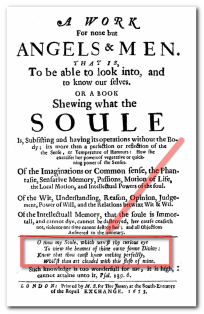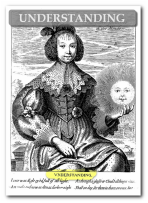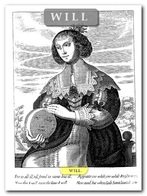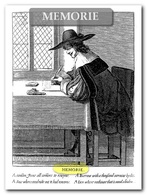Who else may have had a motive in 1653 to hide its author's name (Davies) and to invent a long title of his former "Nosce Teipsum" revealing on the title page that we are "clouded with this flesh" of the author?

John Davies ' (JD of Hereford) ->"Mirum in modum"(1602) contains a dedicatory poem to William Herbert, The Earl of Pembrooke, (s.Blog 301) in which the author confesses that he had to divide his soule into the 3 virtues "Understanding", "Will" and "Memorie". (Shakespeare's "First Folio" was dedicated to the Earl and his brother]
Astonishingly a curtailed text of "->Nosce teipsum (1599)" of the other John Davies ("Sir" JD ) printed 1653 under a new Title "A work for none but Angels & Men" (without mentioning any author) contains allegorical copper engravings of the 3 virtues ("Understanding", "Will" and "Memorie" s.Faksimile)
Remember that both books ("Nosce teipsum"/"Mirum in modum") [s.Faksimiles.Blog 301] printed in the same year (1602) are dealing with philosophical aspects of the Trinity of the soul .
(Sir.J.D. "Of the Soule of Man",
J.D.of H. "The Soules Shape".(s. Blog 301)
Who else may have had a motive in 1653 to hide his (the author's) name and to invent such a long new title of the former "Nosce Teipsum" revealing on the title page "that you canst know nothing perfectly, whil'st thou art clouded with this flesh" of the author?

Title cover Poem of "A worke for none but Angels & Men" (1653) of John Davies' former "Nosce Teipsum"(1599)
A plausible answer is given in the "Marlowe alias Shakespeare non fiction book":
Marlowe living under "false" identities, finally for decades under the name of the bishop's son "Tobie Matthew", wrote under a multplicity of Pseudonyms or faked pennames of dead or living individuals , including Shakspere or the double "John Davies" (as absurd as it may sound) , died at an advanced age (91) at the English College or House of the Tertians, Ghent, [Belgium] Oct.13th, 1655,



